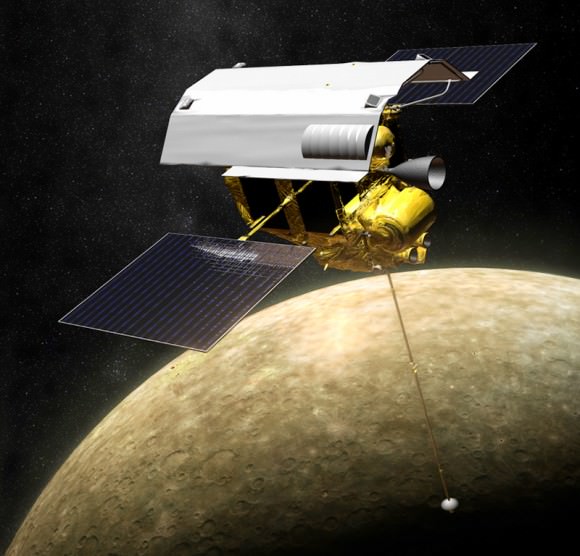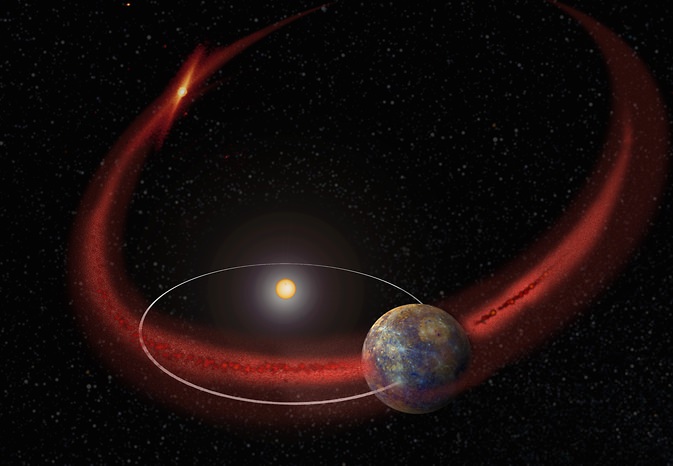We’re sure going to miss the MESSENGER spacecraft at Mercury when it concludes its mission in 2015, because it keeps bringing us really unexpected news about the Sun’s closest planet. Here’s the latest: Mercury may get a periodic meteor shower when it passes through the debris trail of Comet Encke.
Why do scientists suspect this? It’s not from patiently watching for shooting stars. Instead, they believe the signature of calcium in Mercury’s tenuous atmosphere may be pointing to a pattern.
MESSENGER (which stands for MErcury Surface, Space ENvironment, GEochemistry, and Ranging) has been orbiting the planet for three Earth years and sees regular “surges” in calcium abundance on a predictable schedule. The researchers suspect it’s because of bits of dust colliding with Mercury and ricocheting bits of calcium up from the surface.
Mercury also picks up bits of dust from interplanetary debris, but the scientists say it’s not enough to account for the amounts of calcium they see. Extrapolating, the researchers suspect it must occur as the planet passes through debris left behind from a comet or asteroid. There are a small number of such small bodies that do this, and the scientists narrowed it down to Encke.

Computer simulations of the comet’s debris showed a slight difference from what researchers predicted, but they believe it’s because of variations in Mercury’s orbit as it gets tugged by larger planets, particularly Jupiter. Encke itself takes about 3.3 years to do one lap around the Sun, and has been photographed by MESSENGER in the past.
“The possible discovery of a meteor shower at Mercury is really exciting and especially important because the plasma and dust environment around Mercury is relatively unexplored,” stated lead author Rosemary Killen, a planetary scientist at NASA’s Goddard Space Flight Center in Maryland.
MESSENGER, meanwhile, is burning off the last of its fuel to stay in orbit; the final engine maneuver is expected for Jan. 21. Once that’s finished, the spacecraft will slowly spiral down towards the planet for an expected impact in March, ending the mission.
Source: NASA


This reminds of Comet Siding Springs at Mars where magnesium, iron, and other metals were observed in the Martian atmosphere after it’s passage. It’s hard to believe Messenger has been at Mercury for nine years. My grandad was right… time DOES seem to go by faster as you age!
“has been orbiting the planet for nine Earth years ”
Make that 3 (Orbit insertion March 18, 2011).